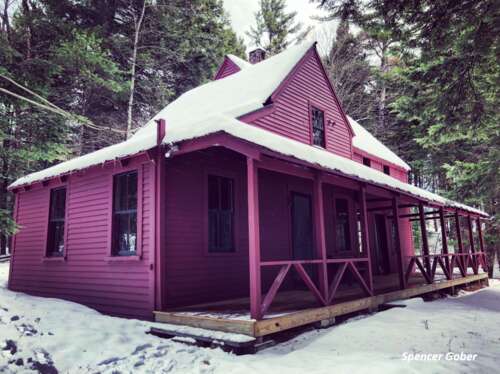
Processing Your Payment
Please do not leave this page until complete. This can take a few moments.
- News
-
Editions
View Digital Editions
Biweekly Issues
- November 03, 2025
- October 20, 2025
- October 6, 2025
- September 22, 2025
- September 8, 2025
- August 25, 2025
- + More
Special Editions
- Lists
- Viewpoints
- Our Events
- Calendar
- Biz Marketplace
Fort Gorges, Maine's camps and cottages, among 2019 Endangered Places
 Courtesy / Maine Preservation
Fort Gorges, in Portland Harbor, is on the 2019 Maine Preservation Most Endangered Historic Places list.
Courtesy / Maine Preservation
Fort Gorges, in Portland Harbor, is on the 2019 Maine Preservation Most Endangered Historic Places list.
Portland landmark Fort Gorges and Maine's camps and cottages are among the sites on the 2019 Maine Preservation's Most Endangered Historic Places list.
This year's list, announced Wednesday night, includes the Charles A. Jordan House, Auburn; the Callendar House, Bar Harbor; the Old Town House, Belgrade; the Readfield Union Meetinghouse, Readfield; the Chaloner House, Lubec; the Fales Homestead, Thomaston; the Tallman House, Bath; Fort Gorges, Portland; and the "camps and cottages" of Maine.
"Maine’s 2019 Most Endangered Historic Places List demonstrates the wide range of buildings that make Maine special,” said Greg Paxton, executive director of Maine Preservation, in a news release. “From high-style mansions and small, rustic vernacular houses, to both grand and humble meeting houses — and one enormous fort — the 2019 list reflects the diversity of our built environment and the strong sense of place and history they provide us are key parts of what make Maine, Maine.
"But without concerted public action, these significant historic places could be lost forever," he said.
The Most Endangered Historic Places List began in 1996 as a way to identify and raise public awareness about preserving threatened historic properties, the release said. Since then, 165 places have been included on the list. Of those, 60 have been saved, 36 are undergoing preservation, and 20 have been lost.
Below are synopsis by Maine Preservation of each place and what the threat is. For full descriptions and possible solutions, visit mainepreservation.org/most-endangered.

Maine camps and cottages
In defined areas along the coast, such as at Mount Desert Island and Prouts Neck, large-scale and sometimes year-round cottages were built by summer residents who arrived by ferry and train to escape cities to the south. More typical along the coast were modest, small-scale cottages. Inland, an array of rustic camps permitted Mainers and visitors to get back to nature and enjoy the healthful benefits of fresh air, the outdoors, and simple pursuits such as fishing, boating and hunting.
Current design trends have led to wholesale removal of historic features in old camps and cottages, stripping them of their character and authentic qualities. Other classic getaways are being demolished and replaced with gargantuan structures that loom over neighboring homes and change the scale, views, and historic access points of rural communities.
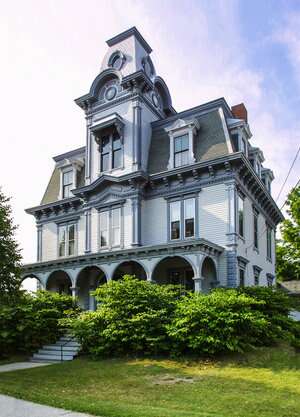
Charles A. Jordan House, Auburn
Since 1880, the Charles A. Jordan House has held a place of prominence within the Lewiston-Auburn area. It was added to the National Register of Historic Places in 1974 and deemed “one of the most ornate Victorian homes in the [area] if not the state of Maine.” A 2018 act of arson ravaged the house. Quick action by the owners temporarily shored up the roof and stabilized the structure, but considerable and timely restoration efforts must be made to halt further deterioration, and to make the building habitable.
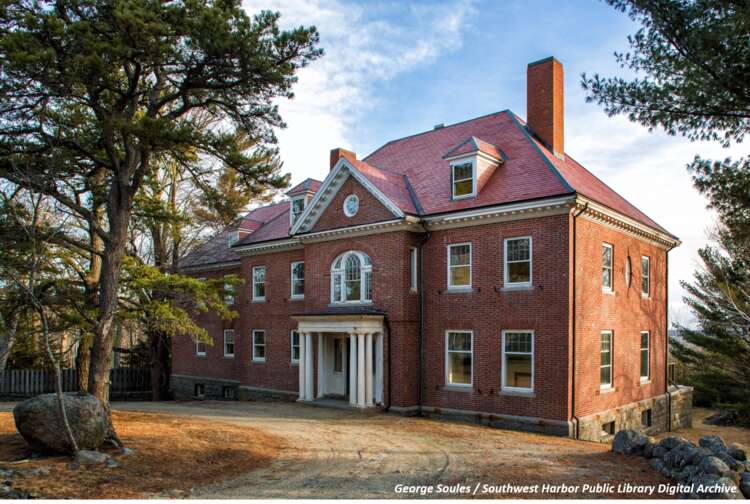
Callendar House, Bar Harbor
This Bar Harbor “cottage,” built in 1901, was designed by architect Fredrick Savage. The structure was Savage’s most formal design — and also the most expensive. Savage was a native of Northeast Harbor, designing more than 300 buildings, and was the most influential architect in the development of Mount Desert Island. The vast majority of his work comprised the cottages and hotels that marked Bar Harbor’s place as a “summer colony.” In 1992, the Callendar House was bought by Jackson Laboratory at a foreclosure auction. Since then, the structure has remained largely unoccupied. While 25-plus years of limited use takes a toll on any structure, the most pressing issue here is the lack of a future path for the building as the owner considers campus expansion plans that could include demolition of this landmark.
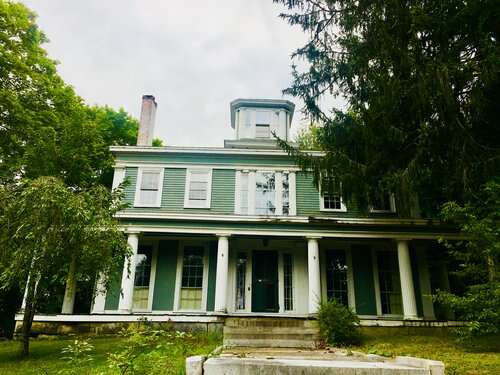
Henry Tallman House, Bath
The 1820s Tallman House is an outstanding Federal and Greek Revival-style house remodeled in the 1840s by Henry Tallman. Tallman was a prominent resident of Bath and a former attorney general of Maine who later served as a judge on the Bath Municipal Court. His home stands high on a hill overlooking the city and the Kennebec River, with a large cupola, floor-to-ceiling windows, and a wrap-around porch girded by fluted columns. The interior is a treasure with a curved Federal-style staircase, striking black and white marble fireplaces, unusual pocket doors that are raised like window sashes, and a beehive oven in the kitchen.
Bath is still experiencing the effects of the last economic downturn, with more than 30 vacant houses awaiting resolution of mortgage disputes. Abandoned by its most recent owners, the Tallman House has been vacant for more than four years. The mortgage holder pays property taxes but has made no move to foreclose and release the property back to the real estate market. The house is in need of substantial and critical repairs before it becomes unsalvageable, Maine Preservation said.
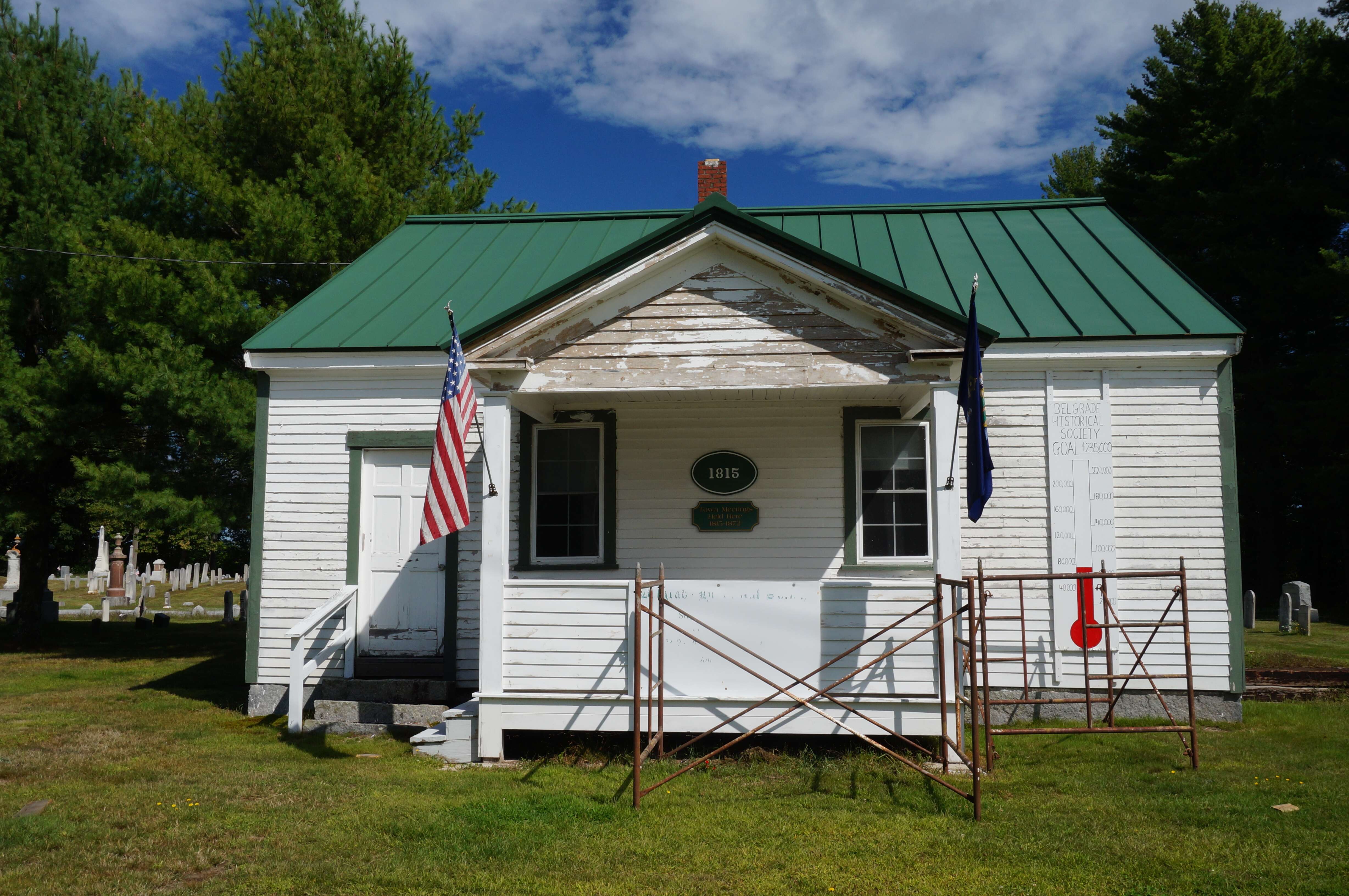
Old Town House, Belgrade
In 1813, Belgrade required a formal place for its town meetings which, until that time, had been held in private residences. As a result, officials raised $200 to construct a “town house” next to the burying ground (now Woodside Cemetery). Completed in 1815, the Old Town House is one of Belgrade’s oldest buildings. Annual meetings were held in the single-story, post-and-beam structure from 1815 until 1872, as was the 1819 vote to separate from Massachusetts.
The town recently entered into an agreement with the Belgrade Historical Society to allow the society to preserve and restore the building and use it for display and meeting space.
An assessment of the structure by the Belgrade Historical Society identified several critical issues, most significantly that the building’s frame is infested with wood beetles and there is dangerous water infiltration.

Chaloner House, Lubec
The Chaloner House, also known as Cleaves Tavern, is a large saltbox-shaped residence overlooking the Lubec waterfront. Completed circa 1818, the timber frame structure is unusual for a floor plan that features two primary entrances and three formal front rooms on each floor — unlike the vast majority of Federal-era houses. The floor plan and historic evidence strongly suggest that the house provided living quarters for a family as well as somewhat separate, and significantly less formal, facilities for boarders.
The Chaloner House was added to the National Register of Historic Places in 2007. The current owner has held the property for more than 40 years and is dedicated to its preservation, but is not in a position to manage the property. The building is currently unoccupied, deteriorating and subject to a reverse mortgage. Without prompt action the Chaloner House could be lost. The Lubec community cares deeply about this important structure but does not have the power to force action, Maine Preservation said.

Fort Gorges, Portland
Completed between 1864 and obsolete before it could be placed into service, Fort Gorges is an imposing structure that covers Hog Island Ledge in Casco Bay in close view of mainland Portland. Constructed under the guidance of chief stonemason Col. Ruben Smart, it is similar to the design and size of Fort Sumter in South Carolina, but built entirely with granite rather than brick.
Fort Gorges was intended to protect the mainland from naval attack but served largely as a storage facility until it was deaccessioned by the federal government and acquired by the city of Portland in 1960. Listed in the National Register of Historic Places in 1973 for its significance as an excellent example of mid-19th century fort construction, the fort is also recognized as a local landmark.
Since 1960, the fort has been in use as a city park and is a popular seasonal destination for thousands of kayakers and boaters. Friends of Fort Gorges continues volunteer efforts to clean up the site and work with city officials to develop a viable preservation plan. Fort Gorges' exposed location has subjected it to punishing weather for more than 155 years. Decades of deferred maintenance mean there is a pressing need for stabilization and repair of the masonry walls and the crumbling wharf. Most critically, there is no strong, committed or funded vision for this irreplaceable historic site. If action is not taken the fort could become unsafe for visitors, and more of the historic fabric will succumb to the elements.
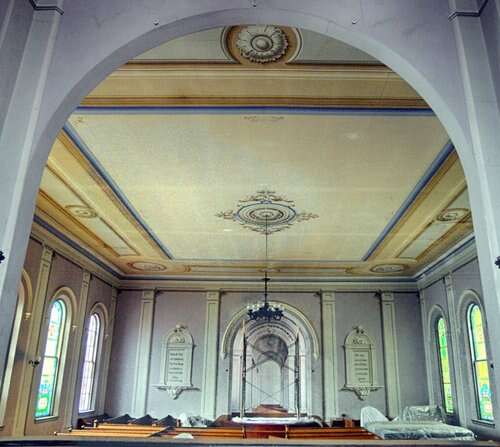
Readfield Union Meetinghouse, Readfield
The Readfield Union Meeting House is significant both for its architecture and for its key role in the Readfield community. When the Meeting House was built in 1828, the rural area surrounding Readfield Corner had several congregations, but they lacked the numbers and resources to construct their own church buildings.
These congregations came together to build the Union Meeting House as a multi-denominational meeting place, with each congregation using the building some of the time. The meetinghouse continued to serve this purpose until the mid-20th century, when the local congregations built their own buildings. Several of the sanctuary’s arched windows have stenciled stained glass, which is only found in one other church in Maine. The building’s most striking, significant and famous feature is its tromp l’oeil decoration, which was added in 1866-68 and covers all four walls and the ceiling of the sanctuary. The painting is attributed to the artist Charles Schumacher, who is known to have painted about 51 other buildings in Maine. This may be the only remaining, intact example of his work.
The Union Meeting House has suffered from years of disuse. Despite ongoing maintenance efforts, the building remains threatened because of its age, the fragility of the murals, and the steep expense of rehabilitation and maintenance.
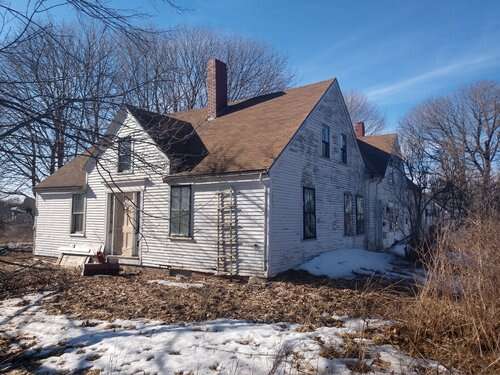
Fales Homestead, Thomaston
The Fales Homestead is one of the earliest houses in Thomaston, and one of the last remaining 18th-century houses in the town. Likely built in 1786, the home was occupied by the Fales family until the mid-19th century. By the early 20th century, the home was owned by the Fernald sisters, who resided there for more than 70 years. Despite several changes in appearance over the last two centuries, the home remains an excellent example of a Colonial low-posted Cape, with its central chimney, fireplace, and its steep roof. The home also showcases an innovative use of graduated clapboards; narrow at the bottom and increasing in width as the boards march to the roofline. These graduated clapboards were intended to help to decrease exposure to harsh Maine winters.
The Fales Homestead has been vacant since the death of its last in-state owner in 2007. It has extensive issues from deferred maintenance. Without intervention, the house may become damaged beyond repair and succumb to the elements, as the formerly attached shed and barn already have.
About Maine Preservation
Maine Preservation, which is based in Yarmouth, is a nonprofit member-based historic preservation organization that promotes and preserves historic places, buildings, downtowns and neighborhoods, strengthening the cultural and economic vitality of Maine communities.
Mainebiz web partners
Related Content

The Giving Guide
The Giving Guide helps nonprofits have the opportunity to showcase and differentiate their organizations so that businesses better understand how they can contribute to a nonprofit’s mission and work.
Learn More
Work for ME
Work for ME is a workforce development tool to help Maine’s employers target Maine’s emerging workforce. Work for ME highlights each industry, its impact on Maine’s economy, the jobs available to entry-level workers, the training and education needed to get a career started.
Learn More
Groundbreaking Maine
Whether you’re a developer, financer, architect, or industry enthusiast, Groundbreaking Maine is crafted to be your go-to source for valuable insights in Maine’s real estate and construction community.
Learn more-
The Giving Guide
The Giving Guide helps nonprofits have the opportunity to showcase and differentiate their organizations so that businesses better understand how they can contribute to a nonprofit’s mission and work.
-
Work for ME
Work for ME is a workforce development tool to help Maine’s employers target Maine’s emerging workforce. Work for ME highlights each industry, its impact on Maine’s economy, the jobs available to entry-level workers, the training and education needed to get a career started.
-
Groundbreaking Maine
Whether you’re a developer, financer, architect, or industry enthusiast, Groundbreaking Maine is crafted to be your go-to source for valuable insights in Maine’s real estate and construction community.
ABOUT
NEW ENGLAND BUSINESS MEDIA SITES
No articles left
Get access now
In order to use this feature, we need some information from you. You can also login or register for a free account.
By clicking submit you are agreeing to our cookie usage and Privacy Policy
Already have an account? Login
Already have an account? Login
Want to create an account? Register
Get access now
In order to use this feature, we need some information from you. You can also login or register for a free account.
By clicking submit you are agreeing to our cookie usage and Privacy Policy
Already have an account? Login
Already have an account? Login
Want to create an account? Register











0 Comments